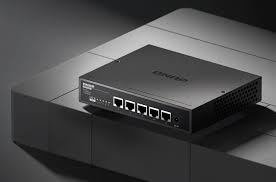IBM Debuts Next-Generation Quantum Processor & IBM Quantum System Two
Today, at the annual IBM Quantum Summit in New York,
IBM debuted 'IBM Quantum Heron,' the first in a new series of utility-scale
quantum processors with an architecture engineered over the past four years to
deliver IBM's highest performance metrics and lowest error rates of any IBM
Quantum processor to date.
IBM also
unveiled IBM Quantum System Two,
the company's first modular quantum computer and cornerstone of IBM's
quantum-centric supercomputing architecture. The first IBM Quantum System Two,
located in Yorktown
Heights, New York, has begun operations with three IBM
Heron processors and supporting control electronics.
With this critical foundation now in place, along with other
breakthroughs in quantum hardware, theory, and software, the company is
extending its IBM Quantum Development Roadmap to 2033 with new targets to
significantly advance the quality of gate operations. Doing so would increase
the size of quantum circuits able to be run and help to realize the full
potential of quantum computing at scale.
"We are
firmly within the era in which quantum computers are being used as a tool to explore
new frontiers of science," said Dario Gil, IBM SVP and
Director of Research. "As we continue to advance how quantum systems can
scale and deliver value through modular architectures, we will further increase
the quality of a utility-scale quantum technology stack – and put it into the
hands of our users and partners who will push the boundaries of more complex
problems."
As demonstrated by
IBM earlier this year on a 127-qubit 'IBM Quantum Eagle' processor, IBM Quantum
systems can now serve as a scientific tool to explore utility-scale classes of
problems in chemistry, physics, and materials beyond brute force classical
simulation of quantum mechanics.
Since that
demonstration, leading researchers, scientists, and engineers from
organizations including the U.S. Department of Energy's Argonne National
Laboratory, the University of
Tokyo, the University
of Washington, the University of Cologne, Harvard University,
Qedma, Algorithmiq, UC Berkeley, Q-CTRL, Fundacion Ikerbasque, Donostia
International Physics Center, and the University of the Basque Country, as well
as IBM, have expanded demonstrations of utility-scale quantum computing to
confirm its value in exploring uncharted computational territory.
This includes experiments
already running on the new IBM Quantum Heron 133-qubit processor, which IBM is
making available for users today via the cloud. IBM Heron is the first in IBM's
new class of performant processors with significantly improved error rates,
offering a five-times improvement over
the previous best records set by IBM Eagle. Additional IBM Heron processors
will join IBM's industry-leading, utility-scale fleet of systems over the
course of the next year.






























Leave A Comment